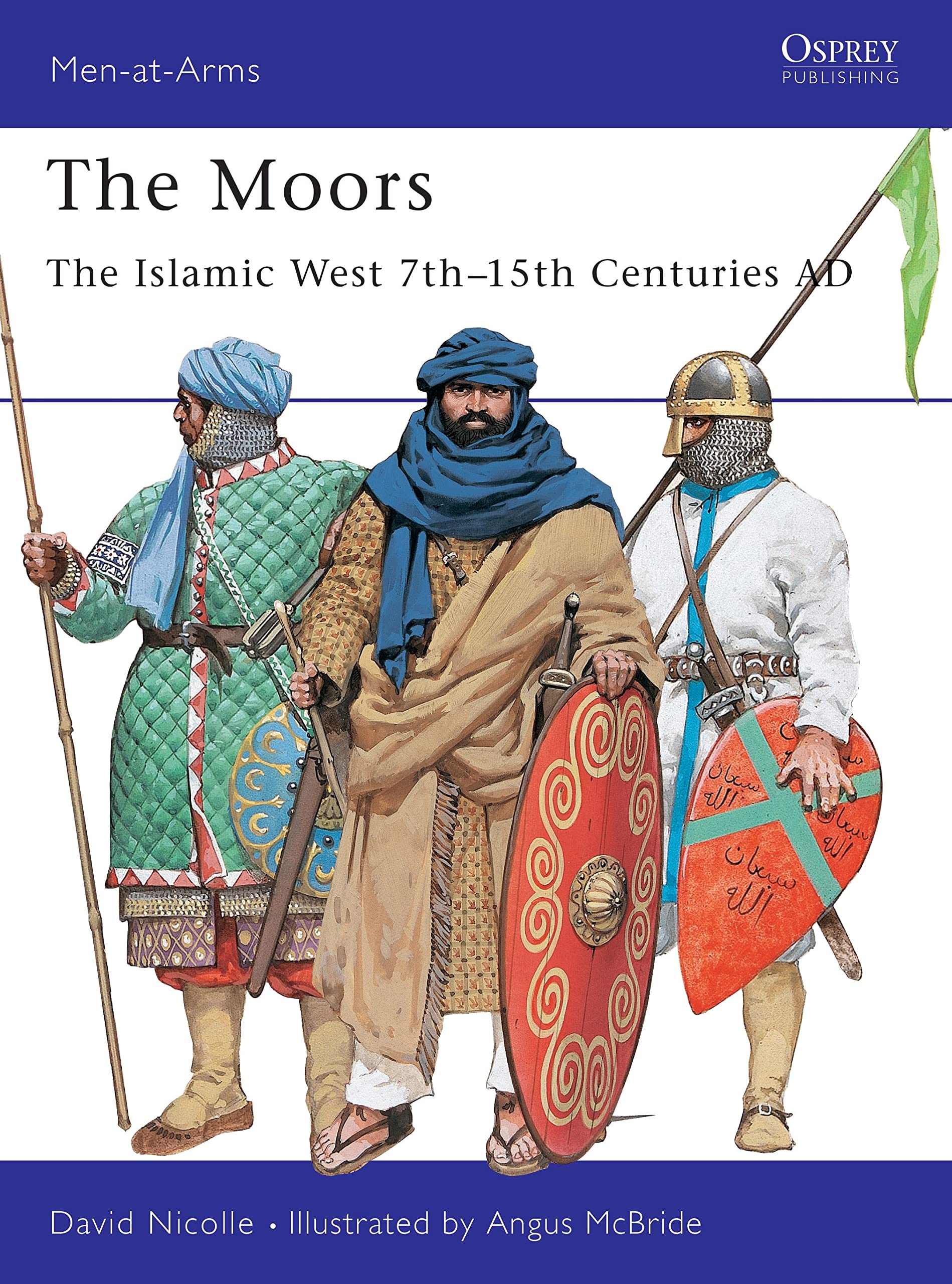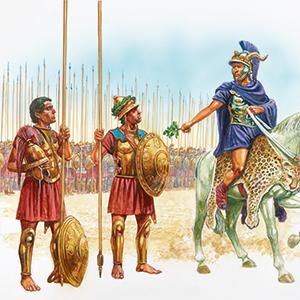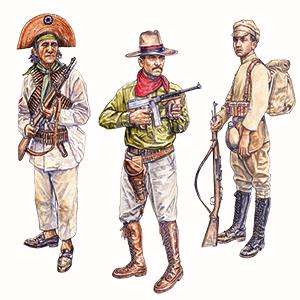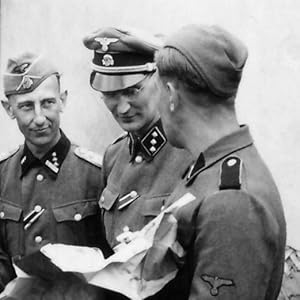Customer Services
Copyright © 2025 Desertcart Holdings Limited
Desert Online General Trading LLC
Dubai, United Arab Emirates


Full description not available





D**R
great pictures. the only thing though is they do ...
great pictures. the only thing though is they do not show the true fact that these Moors were black and not all Turks. Over simplified, but decent pics.
J**S
Good research source
Osprey Publishing's books, although usually very succinct (this one is only 48 pages long, including the index), are almost invariably remarkably full of detailed information, and this volume is no exception. It makes an excellent starting point for research on the Moors in North Africa and Spain during the period listed in the title.
K**Y
Typical Osprey book
The usual Osprey coverage combining McBride's beautiful artwork with Nicolle's knowledge of medieval Islamic warfare. A great introduction to the political and military history, and a detailed source on the arms and armor, of the African and Arab warriors who held much of Spain for seven centuries.
T**A
Decent coverage
Not his greatest work, but decent coverage of the Moors.
M**M
Five Stars
Informative
E**N
Very Insightful.
I've read about the Moors for a while, and haven't come across all this amazing information: beautiful pictures and LOTS of useful information.
N**A
eh
Pretty pictures,not so much information. If you know allot about the moors already and you just wanted a refresher you'll like this book but if you're like me and wanted a book packed with information about the moors origin,adventures,and culture you'll be disappointed.
K**E
One Star
Tracking system doesn't work after 13 days. No sign of where this book is.
W**F
Flavoursome overview
The only UK review on this book so far is a completely unfair affair by an obviously disgruntled person of poor judgement. If the reviewer wanted a book on El Cid perhaps he could have purchased one, such as the Osprey title 'El Cid and the Reconquista?This book covers a huge (800 year) period so it ought to come as no surprise to the discerning Reader that it is not very specific. My knowledge of this chunk of the Medieval world could have been squeezed onto the back of a postage stamp: should you be in a similar boat then this could be for you.David Nicolle provides a potted history of the spread of Islam across the chiefly Berber North Africa and the rise and fall of the various dynasties and Caliphates including the establishment of Moorish Spain. He does a Great job of painting this broad backdrop and an excellent job of pointing out both the similarities between Moorish armies and the more familiar Saracen Middle East as well as highlighting the differences and in this task Angus McBrides excellent illustrations help it along quite nicely. Similarly it details the evolution of the Spanish forces too as they developed from their Muslim roots towards a more European army. I found this book entertaining and it does what it says on the cover i.e. tells you about `The Moors and the Islamic West' over an 800 year period. For a 48 page soft back book it is obviously overpriced (20p a page!) and it shamefully plugs Osprey products in the text but these points are true of all Osprey titles.
J**S
A good one in the series
I very much agree with Weisenwolf (on Amazon.co.uk): this booklet is one of the "good Osprey Men-at-Arms" that delivers the goods, and with all the limitations that you can expect from a 48 pages booklet that is supposed to cover some 900 years. Unsurprisingly, it is just an overview. Interestingly, however, it does more than simply scratch the surface. It mostly avoids the risk of being too superficial, although I found that the sections covering the 13th to 15th centuries were somewhat "lighter" in content than the others. There is also little on the Conquest but, in all fairness, this is covered in another volume.The Golden Age of Cordoba and the Berber States from the mid-8th to the 11th century make up a quarter of the book, get center stage and perhaps even preferential treatment. This is rather unsurprising because they do represent the Muslim Apogee during the whole period. These sections were probably the most interesting of all, with the author not limiting himself to armies, dress and equipment only, but also delving into military architecture and, very correctly, the navies of these States who became very significant naval powers during the period. I would have wanted to learn a bit more about the Almoravides and the Almohades - to give them their "westernised" names (rather than the Arabic ones which David Nicolle uses), but this is where the author probably had to make some painful choices.Anyway, the most important point is whether this booklet delivers a decent overview or not and whether it makes you want to more. As far as I am concerned, the answer is a resounding yes in both cases. Right from the very beginning, when the introduction sets the scene very well, most, if not all, of the key points are made. There is one statement, however, that I am not quite sure about and this is "the ultimate advantage" that the Christian North of Spain is supposed to have held in terms of demographics over the Muslim South "with a relatively low population and rate of reprodcution." IT is a pity that the author did not elaborate a bit more on this but I guess this will give me the excuse to go looking for more on the subject, assuming I ever needed on, of course.Finally, and to crown it all, there are Angus McBride's plate: superb and clear as usual. My favorite one is the "Andalusian Guard Cavalryman" from the 10th century who happens to be red-haired and is intended to illustrate the importance of Christian mercenaries in Andulasia, especially as guards. It is also a useful reminder of the fact that, for most of the period, Christian soldiers sought and found employment in Andalusian armies (and vice versa), regardless of religion considerations.A good four star Men-at-Arms...
J**K
Schneller Versand, gerne wieder
Schneller Versand, gerne wieder
Trustpilot
2 weeks ago
3 weeks ago
3 weeks ago
2 weeks ago